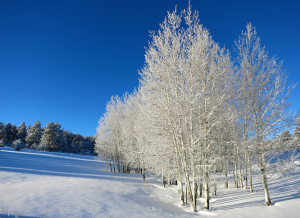by Tina Mitchell
When people plan a trip to Colorado, what do they envision? Soaring mountains begging for exploration. Fly-fishing for trout in gold-medal waters. Fresh champagne-powder skiing at one of the state’s stunning resorts or gorgeous backcountry roads. Whitewater rafting on a rushing, pristine stretch of river. Birding.
Birding?
Okay, probably not that one for most people. But really, Colorado offers some impressive avian-related statistics.
The number of species found on a state’s official bird checklist varies widely. You might expect a state with a coastline – say, California or Florida – to host many more species than a landlocked state such as Colorado. Similarly, a state that borders Mexico – for example, Arizona or New Mexico – likely gets visits from tropical species far more often than states further from the border. And a state with both a long border with Mexico and a sea coast – Texas – well, diversity abounds.
But Colorado has some bragging rights in this arena. Our state boasts 498 bird species documented at least once somewhere in the state. That puts us fifth in the nation for avian diversity – behind California (657 species), Texas (639), Arizona (555) and Florida (516). Our state lies hundreds of miles from Mexico and nearly a thousand miles from an ocean. Yet here we stand, just two shy of the half-a-thousand mark. What new species might appear next to kick that total up to 500? Some nominate oceangoing birds, since the state often experiences an influx of unusual gulls, scoters, loons and other sea birds during the winter: Gull-billed Tern, Elegant Tern and Heerman’s Gull have been mentioned as possibilities. Others think wanderers from the south or east – such as Tropical Kingbird, Chuck-will’s-widow, or Rufous-backed Robin – will crack the mark. Who knows? When you’re dealing with creatures with wings, anything can happen.
[InContentAdTwo]
Our state ranks even higher if you consider only those species that breed here. Most states have conducted field work for at least one Breeding Bird Atlas (BBA). A BBA typically lasts five years, during which volunteers spend spring and summer months covering the entire state. Any birds spotted doing anything that looks like breeding activity – males singing territorially, adults carrying food or feeding young – are recorded. Colorado recently finished data collection for its second BBA, documenting 287 species of breeding birds. How does that compare to other states? California’s work has focused only on the county level. But they’d likely have the highest count nationwide. Texas comes in second again, with 358 breeding species. Yet Colorado’s 287 breeding species ranks third in the U.S. And again – all with no coastline and no international border.
To bring this home to Central Colorado, my husband and I atlased one of the BBA’s 1,760 blocks, since our western Fremont County property lay at the center of the Howard block. For 10 weeks that summer, we surveyed the lower Kerr Gulch area, roughly 3.5 miles of the Arkansas River around Vallie Bridge, the riparian area along Hamilton Creek, and the piñon/juniper habitat north of U.S. Hwy. 50 around Coaldale. Our most memorable finds? A pair of Golden Eagles raising two young in the rocky cliffs above the Arkansas River. A Broad-tailed Hummingbird nest with two nestlings. A Common Merganser mom leading a parade of 14 young fluffballs paddling downriver. A pair of Lewis’s Woodpeckers – decked out in their stunning red, salmon, gray and green plumage – in a cottonwood stand. The sides of Vallie Bridge hosting 450 active Cliff Swallow nests. My favorite – a diminutive Northern Saw-whet Owl raising three youngsters in one of our nest boxes. In just this roughly 10-square-mile area, we tallied 87 breeding species – 30 percent of all of the documented species in the state. Not too shabby for western Fremont County, I’d say.
With its ecosystems ranging from the Eastern Plains – where eastern birds wander in to meet western species – to its many towering, majestic mountain ranges – which boreal and arctic species call home at least part of the year – Colorado laughs at those states that have to rely on coastlines and international borders to hike up their species counts. Come on, visitors! Open your minds and come experience the surprising avian diversity that is Colorado! g
Tina Mitchell watches nature with her human and canine family from their perch in the piñon/juniper habitat of western Fremont County. When she needs to pay the bills, she shows up as a research psychologist on the University of Colorado Anschutz Medical Campus in Aurora.

